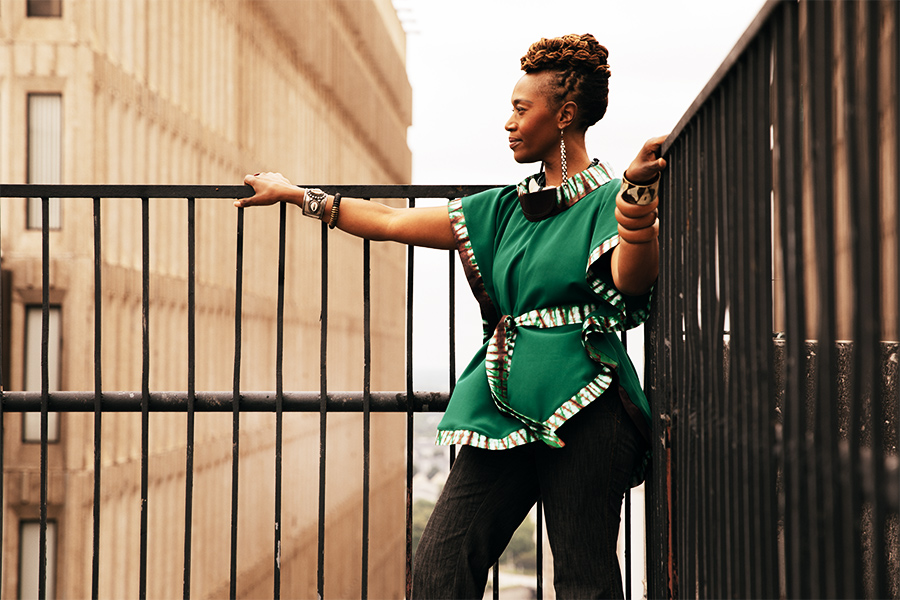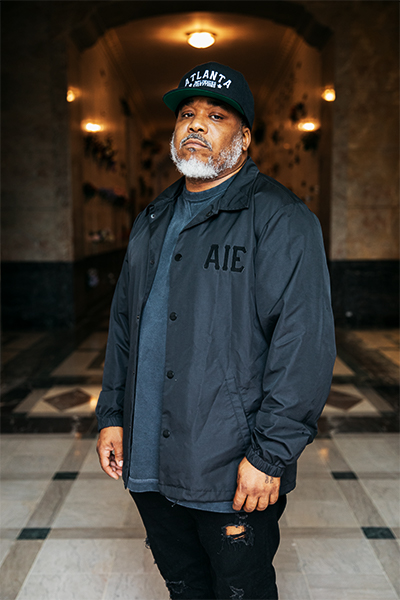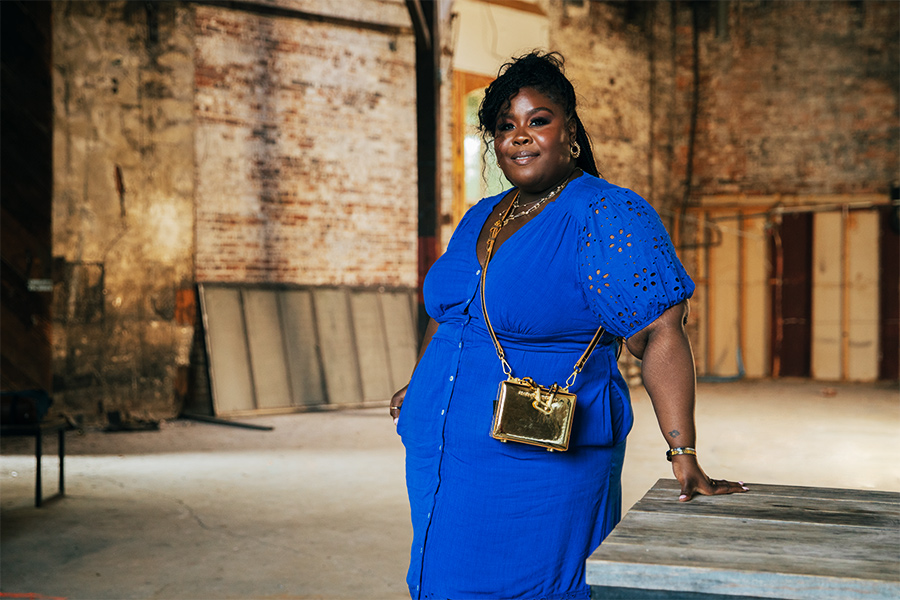City of dreams: how Atlanta, Georgia became ‘The Hollywood of the South’
For people of colour in the film-making industry, there’s no better place to be
A panoramic shot of London transitions to a stark white, modern building signposted as ‘The Museum of Great Britain’. Inside, Black Panther villain Erik Killmonger (played by Michael B. Jordan) delivers some of his most-quoted lines from the 2018 film, in which he embarrasses the fictional museum’s curator by calling out the origins of the African artifacts held in the collection.
For most viewers, the outside shots of the Marvel-created museum simply served as a cuepoint for Killmonger’s commentary. But for the sold-out audience on opening night at the Regal Atlantic Station movie theatre in Atlanta, USA, the scenes felt more like an inside joke. They recognised the building as Atlanta’s High Museum of Art. Moments later, savvy viewers will spot the Four Seasons Hotel Atlanta – one of the most recognisable buildings in the city’s skyline – reflected in the van’s back window.
While Georgia has served as a location for film and TV as far back as 1972, the state (of which Atlanta is the capital) has cemented its status as the ‘Hollywood of the South’ in recent years, hosting over 3,000 professional productions in the last decade alone. These include Netflix’s breakout sci-fi hit Stranger Things, ABC’s reboot of family-friendly sitcom The Wonder Years and a number of big budget films in the Marvel Cinematic Universe.

Jen Farris / Image: Diwang Valdez

Film Tax Credits are perhaps the greatest motivator behind this expansion. Introduced in 2002, they encourage production companies to base their projects in Georgia by offering a 20-30% rebate on in-state spending, from actors’ salaries to the small catering businesses hired on set.
Economics aside, there is an almost-magical attribute that keeps productions coming back to Georgia. “This is a big, rural state with Atlanta as its hub,” explains lighting technician Tory Edwards. “So you can create any world or scenario that you can imagine. You gotta think: Black Panther was shot here, so they created Wakanda here. In (Neftlix series) Ozark, when they were in downtown Chicago, that was Atlanta.”
Many smaller towns in Georgia have maintained an aesthetic that makes them perfect for period pieces set in America’s not-so-distant past. The ever-changing economic landscape of the state has left abandoned warehouses, hotels and even farms available to be used as film sets. Mere kilometres from downtown Atlanta, location scouts can choose from luscious, wooded riverbanks, to mountain tops rendered particularly resplendent with the changing leaves of autumn, to unique topographical locations that look like they could be on another planet.
“I can tell so many stories inside of Northwest and Southwest Atlanta”
This is perfect for the teams behind big budget productions with multiple locations, like the dystopian young adult series The Hunger Games. For example, the unique futuristic atrium of the Atlanta Marriott Marquis, located about 12km south, makes a handful of cameo appearances in The Hunger Games: Catching Fire as the residence of the main character Katniss Everdeen.
Downtown Atlanta has gained a reputation within the film industry for its ability to double for any given city, at any point in history. For location scouts like Jen Farris, that means knowing the architectural history of the city inside out. For example, the Pittsburgh neighbourhood, with its abandoned industrial structures, shotgun homes and bungalow houses, shares a lot of common characteristics with Detroit, Michigan in the 1980s. This allowed it to serve as the backdrop for the popular STARZ show BMF: Black Mafia Family.
“Most of season one was shot in 30310,” she says. “It’s one of the last zip codes where you can capture 100 years of history inside of a three-mile (5km) radius. And it’s consistently used because of that. I can tell so many stories inside of Northwest and Southwest Atlanta.”

The Four Seasons Hotel Atlanta, dominating the skyline / Image: courtesy of Four Seasons Hotel Atlanta

Tory Edwards / Image: Diwang Valdez
The Atlanta film and television industry as it exists today began to take shape around 2004, when the success of artists like Ludacris, T.I. and Young Jeezy kickstarted the city’s reign as the new capital of hip-hop. In those days, productions would fly in workers from other parts of the US – partly because Georgia simply didn’t have the numbers.
Farris estimates that she was one of less than 10 Georgia-grown location scouts when she first started working. Colbert Bernard, who started his career as an assistant director at Tyler Perry Studios around the same time, says that he was one of only 15 Atlanta residents doing his profession in the early 2010s. But anyone in the Atlanta film industry now will tell you that Perry was one of the greatest catalysts for growing the city’s production talent pool.
In 2008, Perry opened the second iteration of Tyler Perry Studios: a pair of buildings containing 19,000m2 of sets and office spaces. It was in this space that many were introduced to Perry’s now-legendary, fast-paced production style – while getting invaluable on-the-job technical training.
“Atlanta is the place to come and thrive if you’re a person of colour”
“When you started off at Tyler Perry, it felt like you were in an incubator,” Edwards recalls. “We would refer to the rest of the industry as ‘The Outside World’ because it felt so insular.”
Because so many people came through Perry’s system, Atlanta projects seem to move much more swiftly than their counterparts in other filming towns. Today, Tyler Perry Studios sits on 133 hectares of land, housing 12 soundstages and 4,600m2 of sets, famously including a replica of the White House. Perry’s insular system was a big part of Atlanta’s ability to resume filming long before other cities and states, following the pandemic.
Even Perry’s massive campus is dwarfed by the 283 hectares at Trilith Studios, home to the majority of Marvel projects released in the last eight years. And the film industry continues to expand: in March 2023, Lionsgate announced plans to launch a production hub in neighbouring Douglas County, where much of the soundstage production of The Hunger Games series took place.

Raven Goodwin / Image: Diwang Valdez

While the film and TV industry in Atlanta has had a huge impact on the city’s economy, the talent base comprising Black business owners, entrepreneurs and service providers has perhaps experienced the greatest boost. This is due to the sheer number of opportunities afforded to African Americans working in film and television, allowing Atlanta to lead the charge when it comes to diversity and inclusion in behind-the-scenes roles.
Actor Raven Goodwin points to the reassurance she has felt as a Black actress in Atlanta, knowing that she would not have to worry about the hair and makeup team knowing how to work with her skin tone and natural hair texture. She also maintains that the Black- and female-led productions happening in the city far surpass other major hubs in the American film industry. “Atlanta is the place to come and thrive if you’re a person of colour,” she concludes. “And the film industry here really highlights that.”